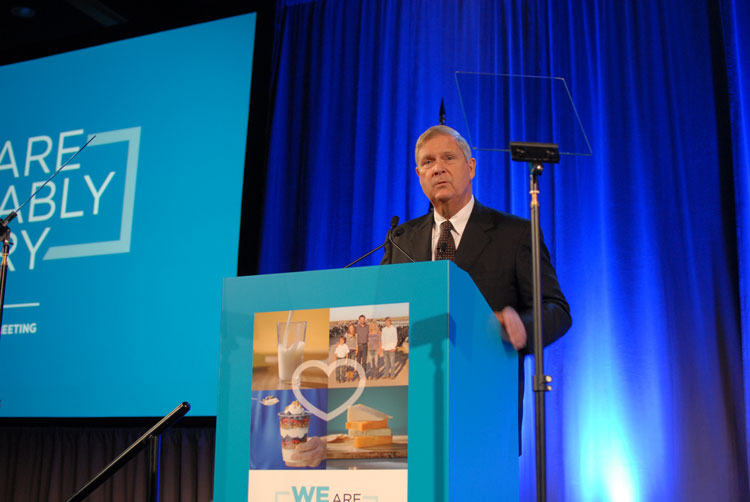 Tom Vilsack, USDEC Chief Executive Officer
Tom Vilsack, USDEC Chief Executive Officer
In recent years, dairy exports have become a larger contributor to milk checks for U.S. dairy farmers.
“Since 2003, nearly half of all new U.S. milk production has gone beyond our borders,” explained Paul Rovey, chairman of Dairy Management Inc. (DMI), when introducing Tom Vilsack, CEO of the U.S. Dairy Export Council. “One day each week, every U.S. dairy cow produces milk for international customers.”
“Dairy exports contributed $1.25 per hundredweight or $36 billion to U.S. dairy farmer income,” explained Vilsack.
As for the economic impact beyond the dairy farm, “Nearly 1 million people are employed in the U.S. directly because of dairy with a $206 billion economic impact; 100,000 people are employed because of dairy exports,” said Vilsack, thanking those attending the joint annual meeting of the National Milk Producers Federation, the United Dairy Industry Association, and the National Dairy Promotion and Research Board at its gathering in Anaheim, Calif., on November 1.
At the moment, most of U.S. dairy exports are dairy ingredients . . . 84 percent by volume. On the flip side, cheese, butter, and other value added products make up 16 percent. Part of the energized focus is to grow the latter portion. Why? Even though cheese and butter make up only 16 percent of the volume, those dairy products contribute 50 percent of the value from dairy exports.








